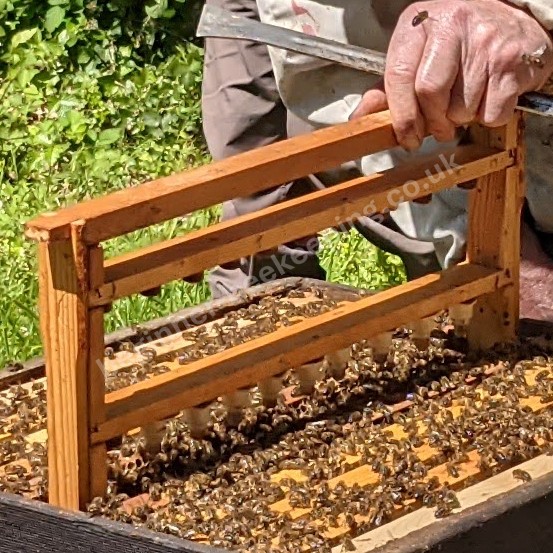Introduction
The honey bee (Apis mellifera) queen is the heart of the colony. Her health determines the strength, productivity, and survival of tens of thousands of worker bees. Yet, new research published in PNAS (McAfee et al., 2025) reveals a hidden threat undermining queen vitality – viral infections that shrink her ovaries, alter her pheromone chemistry, and trigger premature replacement by the workers.
Viral Infections and the Queen’s Decline
Honey bee queens can lay between 850 and 3,200 eggs per day – more than their body weight. But when infected with common viruses like deformed wing virus (DWV-B) or black queen cell virus (BQCV), their ability to reproduce plummets.
The University of British Columbia research team led by Dr. Alison McAfee and Dr. Leonard Foster found that viral infections cause a dramatic reduction in the queen’s ovaries and disrupt her production of methyl oleate, a key pheromone that tells worker bees she’s fit to rule.
When this chemical cue diminishes, worker bees interpret it as a sign of weakness and begin preparing new queens in a process called supersedure – effectively replacing their monarch.
Pheromones: The Colony’s Communication Code
A healthy queen emits a blend of pheromones known as Queen Retinue Pheromone (QRP), which maintains order and suppresses the workers’ urge to reproduce. Among its components, methyl oleate stood out as critical for stability.
In field trials, colonies that received synthetic pheromone blends containing methyl oleate were much less likely to start raising new queens compared to colonies without it. This finding offers a promising, practical tool for beekeepers: pheromone supplementation could help stabilise colonies under stress.
Energy and Immunity: The Hidden Trade-Offs
Viral infections not only reduce methyl oleate production but also deplete triacylglycerols – key energy reserves. The study revealed that infected queens face a biological tug-of-war between immune defense and reproduction, diverting energy away from egg-laying.
Interestingly, even when egg-laying was experimentally restricted (simulating smaller ovaries), queens showed similar reductions in methyl oleate, suggesting that pheromone decline reflects reproductive capacity, not just infection itself.
Implications for Beekeeping and Pollination
This research provides vital insights for the beekeeping industry, where queen failure and poor colony survival have been mounting concerns. Since bees pollinate one-third of the world’s crops, maintaining queen health is essential for global food security.
Beekeepers may soon have a new tool – synthetic pheromone blends – to manage hives during viral outbreaks or periods of intense pollination. Coupled with vigilant control of Varroa mites, which spread these viruses, this strategy could help safeguard colonies against premature queen loss.
Conclusion
The study by McAfee and colleagues reveals how something as microscopic as a virus can destabilise the complex social structure of a bee colony. It underscores a simple truth with profound implications: protecting the queen protects the hive – and our food systems.
Bibliography
McAfee, A., Chapman, A., Alcazar Magaña, A. A., Marshall, K. E., Hoover, S. E., Tarpy, D. R., & Foster, L. J. (2025). Elevated virus infection of honey bee queens reduces methyl oleate production and destabilizes colony-level social structure. Proceedings of the National Academy of Sciences, 122(42), e2518975122. https://doi.org/10.1073/pnas.2518975122
